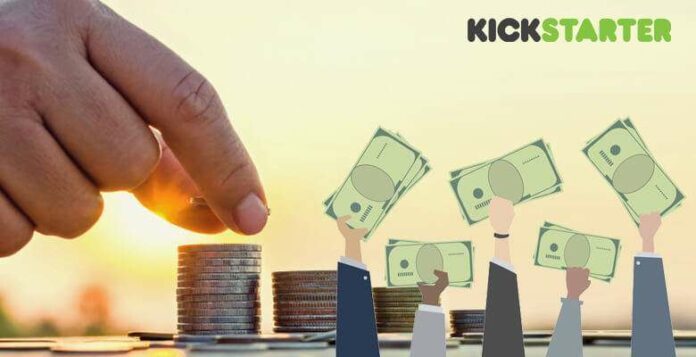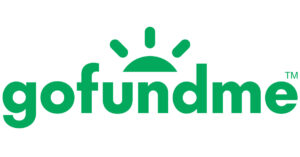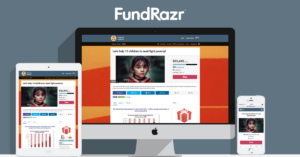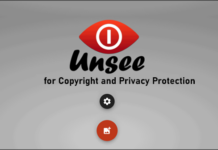
This post will explain Complete Guide About Kickstarter Work will be described in this article. People are curious as to how crowdsourcing websites like Kickstarter function with millions of users each month, and possibly even each week. Kickstarter operates in a variety of ways, from its methods for accepting payments to the kinds of financing it provides.
How Does Kickstarter Work Complete Guide In 2023
In this article, you can know about How Does Kickstarter Work Complete Guide In 2023 here are the details below;
An artistic career or film production can take off thanks to the platform. On Kickstarter, groups of people can band together to finance non-profit advocacy. Beyond providing money, networks can also be found through Kickstarter. Since Kickstarter seems too wonderful to be true, it appears that people are curious about how it operates. It does seem like a dream to collect money quickly and complete your project’s objectives. But there’s a lot better going on here.
What is Crowdfunding?
Crowdfunding is essentially a way for a large number of people to provide projects with the money they require.
These initiatives may come from companies or lone inventors.
Backers are those who provide financial support to give these initiatives an opportunity to succeed.
These people frequently receive a small token of gratitude in exchange.
There are, however, instances where individuals are given project equity in exchange for their contributions.
Crowdfunding was a well-known method of assisting a project to come to life before the emergence of internet crowdfunding platforms.
Flyers, posters, and word of mouth were the main methods used to promote these initiatives.
Crowdfunding, particularly online crowdfunding platforms, is responsible for the beginning of many contemporary startups and businesses.
People continue to ponder how crowdfunding operates in defiance of this.
What is Kickstarter?
One of the largest internet crowdfunding platforms in the world is called Kickstarter.
People swarm to Kickstarter to kickstart their original initiatives and fresh concepts.
On the other hand, a lot of financiers and supporters visit Kickstarter to take part in the “next big event.”
In the realm of crowd funding, Kickstarter, which was founded in 2009, is a top choice.
It helps campaigns achieve their objectives quickly and has a sizable following.
Kickstarter can assist you whether you have a concept for an album, a technological breakthrough, or a finished novel ready for publication.
You just need to promote your campaign effectively and put a lot of effort into your pitches.
How kickstarter works: The basics
Projects and goals
Making this happen requires careful planning and marketing of your proposals.
But where should you begin?
Knowing what initiatives are accepted first is helpful.
Platforms for crowdfunding frequently have to strike a balance between contributions and investments.
For your knowledge, GoFundMe is more similar to the first.
The following are the different types of GoFundMe projects:
Performing Arts Comics and Illustration Design Technology Fashion Film and Video Ballet Photography
- Food
- Crafts
- Games
- Publishing
- Journalism
As you can see, these have a tendency to be innovative company endeavours.
To make these initiatives a reality, backers donate money.
Everyone is reminded by Kickstarter that these are neither donations nor items from the shop.
Giving money benefits the broader “creative process,” according to donors.
In particular, Kickstarter’s most contentious rule—that initiatives must be funded entirely or nothing—reminds you of this.
All or Nothing
Frequently, those who inquire about Kickstarter’s operation want to know how it handles payments.
The all-or-nothing principle applies in this situation.
The all-or-nothing rule, which applies to all Kickstarter projects, states that only finished projects receive the money they collected.
When a project’s objectives are reached, Kickstarter only charges supporters’ credit cards.
Therefore, activists must make every effort to ensure that they achieve their objectives.
Because if they don’t, they won’t get any of the funding that their supporters offered.
By doing this, GoFundMe eliminates potentially unsuccessful projects.
Projects can sometimes go unfinished because efforts fall short of their objectives.
However, when this occurs, activists occasionally still use the money they made to take action.
In the end, Kickstarter wishes to make sure that participants honour their commitments.
The appropriate quantity of funding must come from backers.
On the other side, campaigners are required to deliver a completed project.
Inadequate funding results in insufficient initiatives.
Creators and Backers
How does Kickstarter define the responsibilities of the backers and creators who power the crowdfunding platform?
In the first place, it ensures that those who take on either (or both) responsibilities are aware of what they are getting into.
In essence, before starting a campaign, creators are required to establish project objectives and deadlines.
As was already stated, Kickstarter has an all-or-nothing policy.
As a result, it would be unwise to establish these goals lightly.
After choosing a financing target, creators must now pique the interest of potential donors for their project or projects.
If it appeals to a large enough audience, the initiative will succeed and generate revenue from pledges.
Projects, their advocates, and marketing tactics receive a lot of attention.
Backers, however, are also crucial components of the crowdfunding equation.
You must first understand their interests in order to know how to approach them.
Projects are backed and funded for a variety of factors.
Personal connections and creative concepts are frequent justifications on Kickstarter.
Some individuals give money to causes they believe in, whether or not they know the people behind them.
Others fund initiatives because of the benefits.
For Kickstarter initiatives, limited edition rewards are typical, and this can attract lots of supporters.
The fact that backers are not there for financial gain is made abundantly obvious by Kickstarter.
In contrast to other crowdfunding sites, equity cannot be rewarded.
A backer’s job on Kickstarter is to aid in the realisation of an idea.
Whatever occurs, creators retain full ownership of their concepts and plans.
Rewards
The kind of rewards that can be exchanged between campaigners and backers must be made explicit.
Once more, Kickstarter is adamant that rewards not be used in equity trades.
The crowdfunding site hopes to at least elevate the artistic process.
According to Kickstarter’s website, backers should get a behind-the-scenes look at how these initiatives will be realised.
Rewards at the very least consist of a copy of the undertaking.
You receive a copy of a movie’s DVDs and occasionally even a Director’s edit if you contribute to its funding.
When you contribute to the creation of a comic book, you can see how each panel and figure is created.
As long as the project incentives do not provide “equity, financial returns, or loans,” they are free to be as inventive as they like.
How kickstarter works: Pricing
- In the event that your campaign succeeds, Kickstarter deducts costs from your final amount.
- A 5% platform fee as well as various payment processing fees apply to a project that has been effectively funded.
- The major variables influencing the latter fees are your bank and your local currency.
- These may comprise 3% to 5% of the overall amount you have raised.
- The crowdfunding website Kickstarter is all-or-nothing, as you will learn more about eventually.
- Unlike Indiegogo, Kickstarter does not offer a variety of fixed and flexible financing options.
- But like Indiegogo, Kickstarter is up front about any fees associated with using their website.
- According to their website, “In general, funds raised on Kickstarter are deemed income in the US.”
- This implies that the US government will charge your crowdfunded endeavours as well.
- There might also be a sales tax, depending on where the supporters and activists are located.
- On their help website, Kickstarter has a whole part devoted to the tax ramifications.
- However, there are also instances of nontaxable “donations” of money.
- In these cases, backers donate funds without expecting anything in exchange.
- Though it’s rare, your initiatives and objectives may influence how people support your viewpoint.
Your endeavour is where it all begins, after all.
How Kickstarter Works; Signing Up
- The next stage is launching your own campaign now that it is clear what Kickstarter is all about.
- Of course, you can join Kickstarter without creating a project (see: Backers), but a lot of creatives do this.
- How effective is Crowdfunding for you?
- Signing up is the first step.
- Anyone interested in using the largest crowdfunding site in the world can follow the step-by-step instructions provided here.
- Check out the Kickstarter page.
- You can see each of the highlighted projects here.
- These come under their divisions for arts, games, comics, design, technology, film, food, and crafts.
- The “Start a Project” button is located in the top left area.
- You will be taken to another website after clicking.
- You will be required to submit the category of your campaign as well as your initiative idea(s).
As soon as they are resolved, state your position. You are required to identify your home nation here. You are questioned about your eligibility to be an activist on the same page. You must be at smallest 18 years old, have a valid government-issued Documentation, a bank account, and a debit or credit card. You must independently register for an account if you don’t already have one. You can choose to connect your Apple ID and Facebook account. You can easily create an account with your email address if you don’t have either.
You can begin pitching your campaign once your account and its information have been confirmed.
Campaigners must also be at least 18 years old, be ready to launch a project in their own name (or on behalf of another person), and have a verifiable address, bank account, government-issued ID, and debit or credit card.
Keep in mind that these cards need to be authorised in order to reflect Stripe, Kickstarter’s payment partner.
Pros and Cons of Using kickstarter
All crowdfunding websites have a particular area of expertise. There is an equilibrium between its advantages and disadvantages, just like with any other website.
This regulation does not apply to Kickstarter. It can aid many people in rapidly collecting funds, but this always depends on their target market. Marketing and campaign strategy are only successful if they reach the target audience. Equity Benefits Image by Markus Winkler on Unsplash
The policy of Kickstarter prohibiting the sale of project equity serves the interests of their supporters.
However, Kickstarter makes sure that these rewards support each creator’s artistic process. Angel investors and backers rarely support projects that offer them nothing in return.
It’s a bold move on Kickstarter’s side to maintain complete control over your company despite receiving support from hundreds of people.
They enhance support for their communities while granting privilege to artists and fostering their artistic endeavours. Speaking of groups, you can create one on Kickstarter as well. Every day, millions of individuals visit Kickstarter in search of a break.
It will be impossible for you not to discover your people by looking through all the projects and the stories that go with them. Even if your campaign’s objectives are not met, you won’t go home empty-handed. Another means of success is to have a powerful network. The fact that Kickstarter is a strict platform may be the biggest advantage of beginning your campaigns there.
It pushes you to follow suit and has very defined objectives and boundaries. Projects that succeed on Kickstarter must work diligently to raise money because of their all-or-nothing policy and campaign lengths (the longest should be 90 days). This also means that in order to give to their supporters on time, campaigners must have a set schedule.
Missing deadlines will prevent the endeavour from ever starting.
You are pushed by Kickstarter to prevent this from occurring. Additionally, anyone can use GoFundMe. Its user-friendly interface contributes to its audience’s diversity and worldwide reach. No matter your age, keeping an eye on your endeavour is not difficult.
Pros and cons of Using kickstarter
The all-or-nothing concept of Kickstarter has many advantages, but it also has drawbacks. Many contributors forget they made a financial commitment because they are not charged until a campaign’s objectives are achieved.
This could lead to a number of issues, such as a slower release of money for your campaign. Campaigns can last up to three months, for perspective.
Advantages
It allows pledgers plenty of time to forget about the commitments they’ve made. The unfulfilled pledges of campaigners would be a drawback of using Kickstarter from the perspective of the investors. Although Kickstarter is not an online store, investing has many benefits and presents attached to it.
So, it is frequently regarded as one. Backers must also be particularly cautious about the initiatives they are supporting because many ideas do not materialise.
Finally, if you are fortunate enough to have many supporters, you can anticipate receiving numerous unwanted approaches.
Disadvantage
There could be dozens and dozens of emails about your project from individuals you don’t know.
Of course, this is fantastic, but the creative process can only handle so many thoughts and opinions at once.
Not everyone is familiar with crowdfunding, nor do they completely comprehend how Kickstarter uses it. Be ready to respond to any inquiries people may have when you are a campaigner about it and your initiative. Anywhere and at any moment, this is possible. Your objectives might not always coincide. Then, you or they must switch to a different device.
Crowdfunding Platforms Like Kickstarter
1. GoFundme
Popular financing website GoFundMe focuses on “personal causes.” This indicates that the site is positioning itself as a location for charitable endeavours. The website GoFundMe is a collaborator of Indiegogo.
As a result, the two can concur to handle various forms of funding. GoFundMe is, however, also open to business endeavours; it’s just uncommon on the site. Like its affiliate website Indiegogo, GoFundMe does not have an all-or-nothing rule. It understands that an undertaking is not necessarily finished if a goal is not achieved.
Projects may still have optimism for the future as a result. Project perks are uncommon on GoFundMe because it positions itself more as a venue for charitable donations. Investors on Kickstarter may view these “perks” as compensation for their contributions. Some people view this as a barrier, so they continue to make a trade. This is another Kickstarter Work alternative.
2. Indiegogo
The Kickstarter brand positions itself as a venue for creatives with ground-breaking concepts. GoFundMe, a rival, uses the same branding. These two are frequently set against one another as a result.
In reality, Indiegogo has an entire page devoted to how it differs from Kickstarter because this occurs so frequently. You should adhere to one or the other, depending on your fundraising requirements. The two’s fundraising options stand out as the major distinction.
This is another Kickstarter Work alternative. No money was collected by Kickstarter campaigns that fell short of their objectives. Conversely, Indiegogo campaigns can keep all of their profits if they select “flexible financing.” The characteristics shared by both include 5% transaction fees.
3. FundRazr
FundRazr is a lesser-known website for crowdfunding. This underdog company, founded in 2009, has collected more than $175 million. It is not surprising that it is becoming more common among young people. Mobile apps, social media integration tools, and even more adaptable fundraising choices are all available through FundRazr. The platform also offers a free trial time as an added bonus. On FundRazr, anyone can raise money, but its fundraising levels are the cherry on top. This is another Kickstarter Work alternative.
You have the option of beginning a campaign for Free, Standard, or Pro. The free option, which enables your supporters to pay for FundRazr’s platform fees, is the most intriguing of the three. Similar to Kickstarter and Indiegogo, this costs 5% of your overall revenue. Only 2.9% of your overall earnings will be deducted from your account, plus a $0.30 processing cost. For millennials and creatives who are attempting to make ends meet, this platform is very popular. A 5% platform charge might seem insignificant to some, but it could make or break others. FundRazr demonstrates to creatives that support can include paying the additional platform costs on your behalf.
Final word
It functions flawlessly as a platform for crowdfunding, to commence. It understands how to respect the efforts of each creative individual seeking their major break. Additionally, it adheres to strict deadlines and functions precisely. The way that GoFundMe motivates people to give their all to fund raising is masterful.
In more detail, Kickstarter’s 5% platform charge is what makes it function. This is the standard cost across all international crowdfunding websites. Additionally, Kickstarter charges fees for bank transfers, which differ depending on the currency and bank. Since Kickstarter has the audience that everyone requires, it is a good platform for crowdfunding.
It is one of the biggest locations in the globe for start-ups and other innovative ideas. Unlike other methods of fund raising, Kickstarter benefits both campaigners and supporters.

















